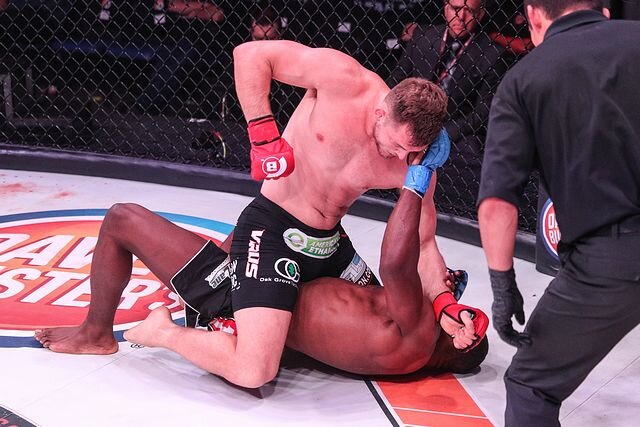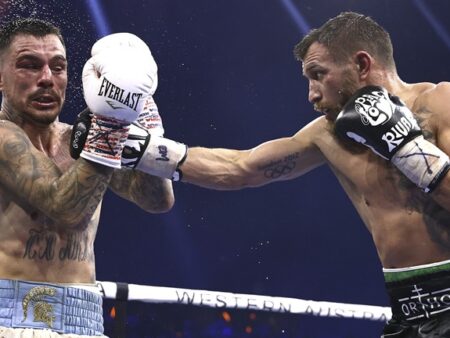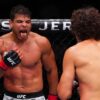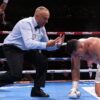
While wrestling is often considered an excellent foundation for entering mixed martial arts, it appears that a declining number of elite wrestling athletes are making this transition today.
Logan Storley, a four-time All-American wrestler from the University of Minnesota, suggests that several factors influence a wrestler`s decision regarding an MMA career. Historically, moving into MMA was a common progression for wrestlers not continuing on the international stage. However, Storley argues that the significant financial opportunities now available through Name, Image, and Likeness (NIL) deals are altering this pattern.
“We are currently in a unique phase regarding MMA and the influx of NIL funds, which is resulting in fewer wrestlers crossing over,” Storley commented. “NIL has brought about considerable change. Athletes are earning substantial amounts of money, so we aren`t seeing many wrestlers making the move anymore.”
Although college wrestling programs don`t command the same level of financial investment as football or basketball, considerable sums are still being paid out, particularly to top-tier competitors.
An example is Gable Steveson, another Minnesota wrestler and Olympic gold medalist, who in 2021 became the first athlete signed to an NIL deal by World Wrestling Entertainment (WWE). While the specific terms weren`t revealed, it`s understood that Steveson earned a healthy income from WWE.
Storley understands that top wrestlers are receiving significant income from NIL deals, making it challenging to match such earnings early in an MMA career where pay is often low. He points out that some top recruits are making “a million, $1.5 million,” questioning why they would then enter the fight game. He suggests they might instead save their earnings and be financially prudent.
He reflects that this situation poses a challenge, potentially changing the athletes` “hunger” for fighting. He also notes changes in college sports dynamics, like the transfer portal, which affect team composition.
Beyond financial considerations, Storley highlights the limited options currently available at the top levels of MMA. While the UFC is a major entity and the PFL is his current promotion, the majority of MMA events today occur regionally.
“The landscape of MMA has shifted,” Storley stated. “With initiatives like Contender Series and fewer fighters on rosters in promotions like PFL, plus Bellator`s closure, things are different. Wrestling offers financial stability through NIL, while early MMA careers lack security. The initial years are extremely difficult. I believe the combination of athletes earning money in wrestling and moving into coaching or similar stable roles offers more security.”
He also suggests more individuals are opting for standard jobs rather than pursuing MMA. Storley finds it interesting to anticipate how the trend of wrestlers transitioning into MMA will evolve over the next five years, noting that it is definitely changing, though unsure if this trend will continue.
Burnout is another significant factor Storley identifies. Most wrestlers begin training and competing at a very young age, often maintaining a demanding schedule for 10 to 15 years. By the time they finish college, this intense dedication can take a toll.
Storley believes some simply want to pursue different things, and he doesn`t criticize them, especially those graduating from competitive programs with valuable degrees. He sees this as a change happening with athletes who have dedicated their lives to wrestling and competing.
He mentions that some athletes have been engaged in rigorous two-a-day training sessions since they were eight years old and eventually no longer wish to continue such a lifestyle. He describes the historical connection between MMA and wrestling as an “interesting run.”
As for Storley, he always envisioned a future in MMA and is satisfied with his decision, particularly as he prepares for the PFL welterweight tournament semifinals. While he cannot definitively predict if more wrestlers will follow his path, he acknowledges a clear reduction in the number of athletes moving from wrestling to MMA.
He stated his strong desire to fight and expressed pride in his MMA career. He ponders if his career trajectory would have been different if he had access to high NIL earnings at 18 or 19. However, he concludes by expressing happiness with where his MMA journey has led him and its positive impact on his life.







